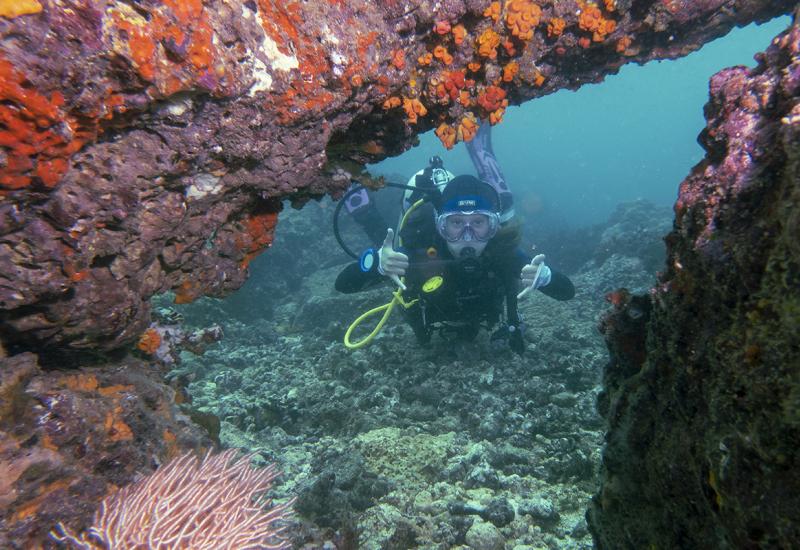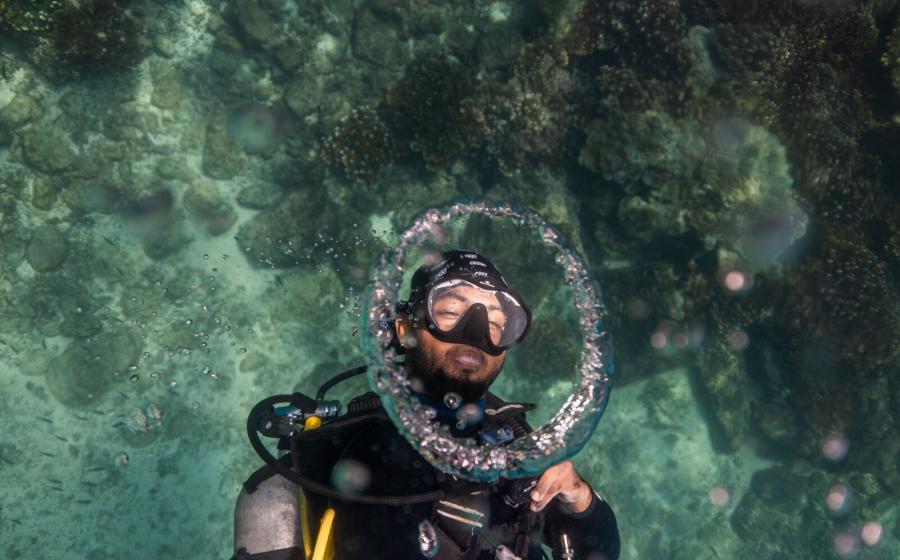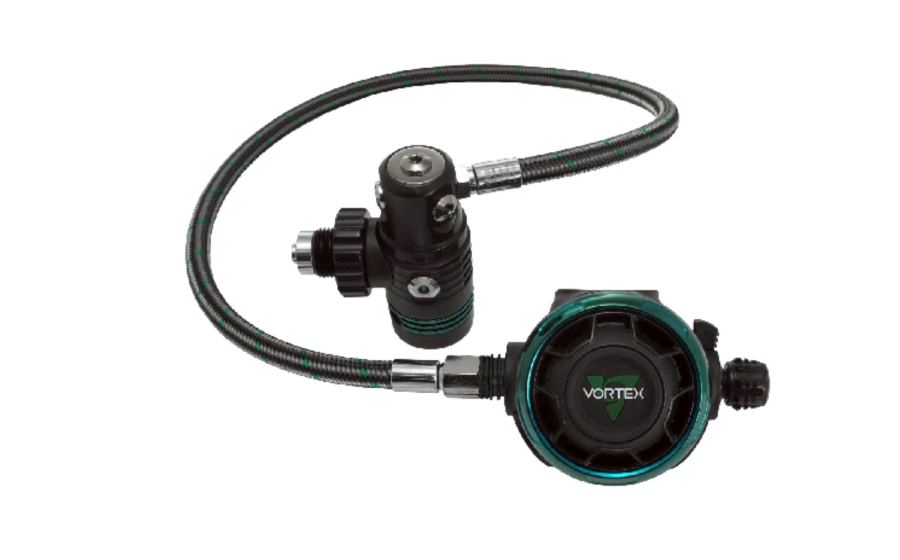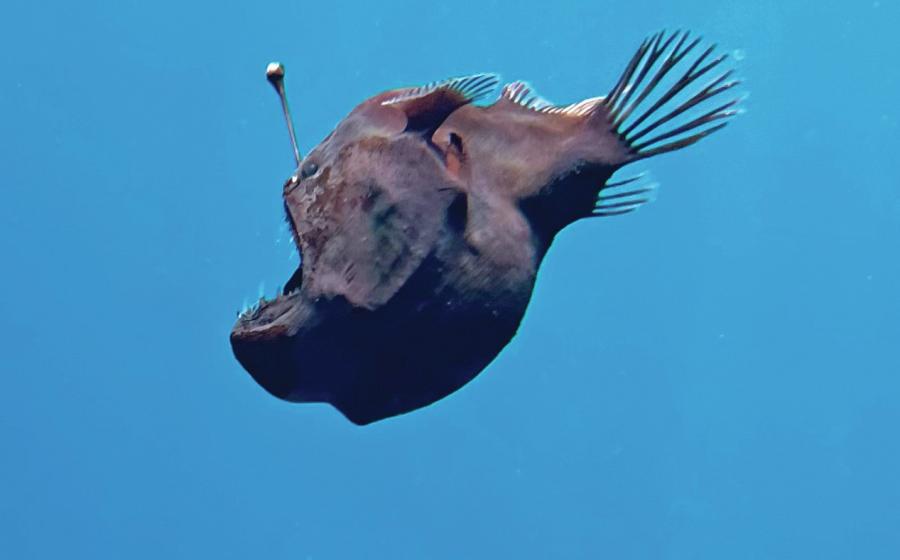Diving Panama: A Coast to Coast Adventure
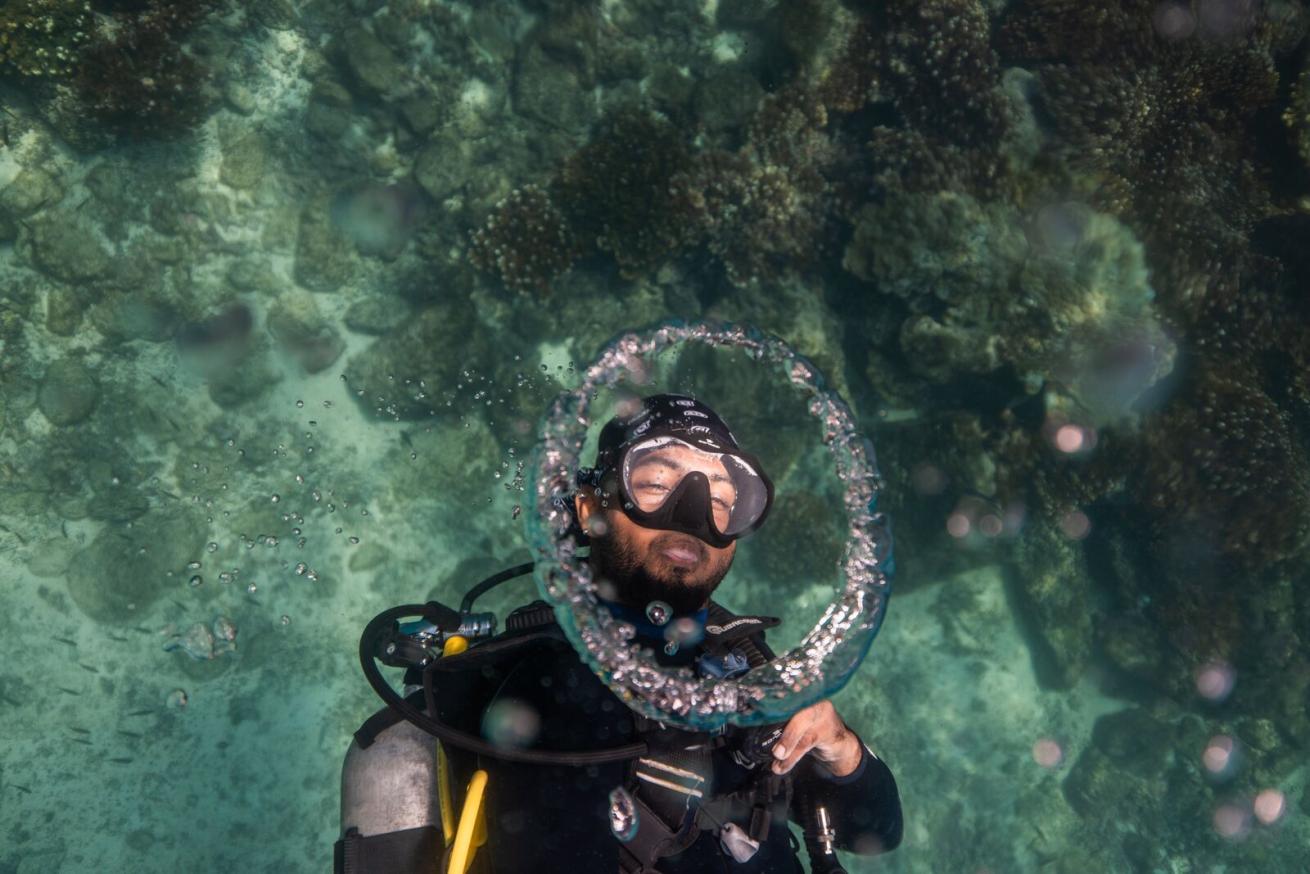
Courtesy Visit PanamáPanama is a unique dive destination where you can explore both the Pacific and Atlantic oceans in a single day.
It should be no surprise that the country of Panama, comprising the isthmus between North and South America, would have incredible wildlife—both terrestrial and aquatic. After all, it’s the crossroads of continents at the nexus of enormous oceans. And with its unique narrow span of land stretching from north to south, Panama makes it possible to dive on the Pacific in the morning, drive only a few hours, and dive in the Caribbean Atlantic—on the same day.
Whether or not you’re bold enough to attempt this feat in a single, busy day, the greatest appeal that brings divers to Panama is that both coasts offer a different experience. In the north, the Caribbean Sea is generally sheltered from the bigger swells of the Atlantic, which provides more coral reefs and marine life for divers to explore. To the south, the Pacific is more exposed to strong ocean currents, giving way to bigger fish encounters—sharks, rays and, if you’re as fortunate as I was, spectacular sightings of breaching whales. Both coasts are immune to hurricane damage since Panama lies well outside the hurricane belt, which contributes to the continued conservation of the great scuba destinations to discover.
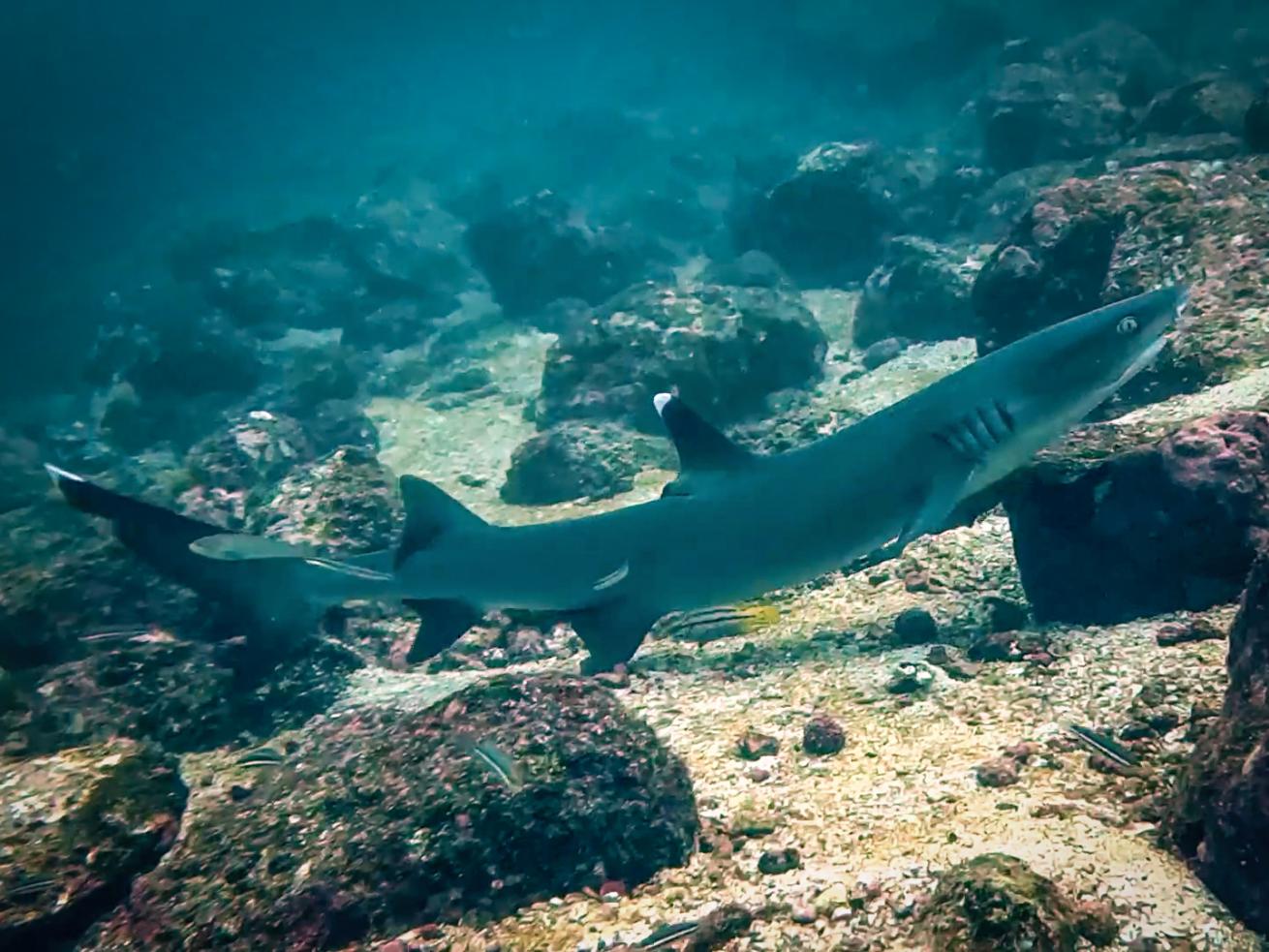
Erik TrinidadA white-tipped reef shark at the Wahoo Rocks dive site on Panama's Pacific side.
Two Oceans, One Day
If you’re short on time—or merely want bragging rights to say you dived the Pacific and Atlantic in a single day—the easiest way to coordinate this is by booking the “Two Oceans in One Day” scuba tour package from Scuba Panama, based in Panama City. The morning starts with a dive in the Pacific, at a dive site near Taboga Island, roughly six nautical miles south of the southern mouth of the Panama Canal. Here, you explore and observe small coral ecosystems that support schools of tropical fish, plus the occasional sea turtle or stingray.
Afterward, there’s no need to worry about “no-fly time.” Once docked back on the mainland, it’s a mere two-hour drive to the Atlantic coast—across the Panama Canal Watershed, which is only a few hundred feet above sea level— where the best diving in the area leaves from the town of Portobelo in the province of Colón. There are several noteworthy dive sites around the marine area of Portobelo National Park—thanks to the Reef2Reef Restoration Foundation—including Isla de Drake, which includes a wall of coral that goes down nearly 100 feet and supports local parrotfish, boxfish, barracudas, groupers, pipefish, moray eels and more. Divers may even spot an old anchor, remnant of the days when there were pirates in the Caribbean.
While this scuba tour is truly unique, it can be expensive when traveling alone or in a small group. It’s certainly an adventure, but it doesn’t represent the best scuba diving Panama has to offer. For that, you’ll need to base yourself farther away from Panama City.
Related Reading: How to Book a Sustainable Dive Trip
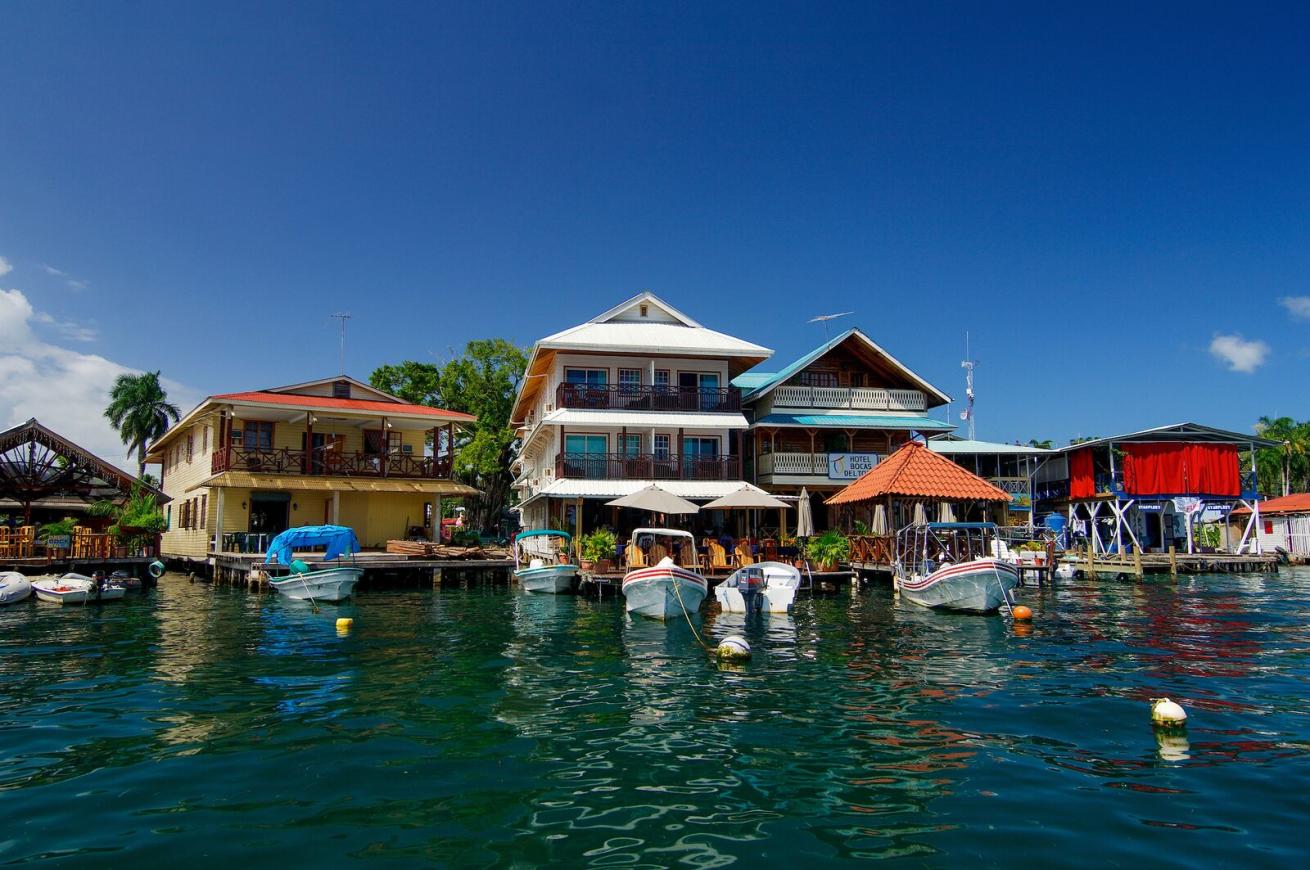
Courtesy Visit PanamáIsla Colon, Bocas del Toro.
Head West for Panama’s Best Diving
There’s a thriving scuba diving community in Bocas del Toro, capital of the eponymous western province, as well as an archipelago of beaches, hiking trails and surf spots, plus lively bars and clubs. There are several PADI dive shops and even dive hotels here, and we based ourselves at the Divers Paradise boutique dive hotel. It’s a one-stop-shop for both room and boat, with an enthusiastic diving-minded staff that knew what we were there for, and led us to many great dive sites.
Diving around Bocas del Toro, we encountered many tropical fish in a colorful, coral-filled environment—angelfish, parrotfish and groupers, plus barracuda, eels, lobsters, crabs, nudibranchs, seahorses and the occasional nurse shark. We managed to dive a couple of impressive wrecks—the sunken sailboat Godewind and the ghostly wreck of the Mystic Wind trimaran—and even had an engaging encounter with an octopus hunting at night, at “Sachen,” a site known for wildlife encounters.
Perhaps the two most thrilling dives during my time in Bocas del Toro were the Polo Channel and the Machete Caves, both a series of tunnels, overhangs and underwater caverns to navigate through. Even in the middle of a sunny day, flashlights are required and they came in handy to spot the moray eels and lobsters hiding in the nooks of the cave walls at around 40 feet.
Going Pacific
From Bocas del Toro, it’s also possible to dive both coasts in a single day, if you plan ahead. First, do an early morning dive and then quickly find yourself a boat back to the mainland. From there, it’s about 3.5 hours to drive about 130 miles to Boca Chica on the southern coast. There, hotels like Hotel Bocas del Mar offer to make arrangements and contract out diving excursions with local PADI dive centers. If you plan it right and everything goes on without a hitch, there’s a possibility to dive sites in the Islas Secas that afternoon.
However, if you’re not in a rush—and ideally you aren’t—go by car from Bocas Del Toro to Boca Chica at your leisure, then hop on a boat to take you to the Islas Secas. I recommend you base yourself at the Islas Secas Resort, which is equipped with a PADI dive shop. The town of Santa Catalina is also nearby, where I dived with one of the many diving outfitters there, Expedicion Coiba.
Related Reading: 5 Tips To Stay Safe On Your Next Dive Trip
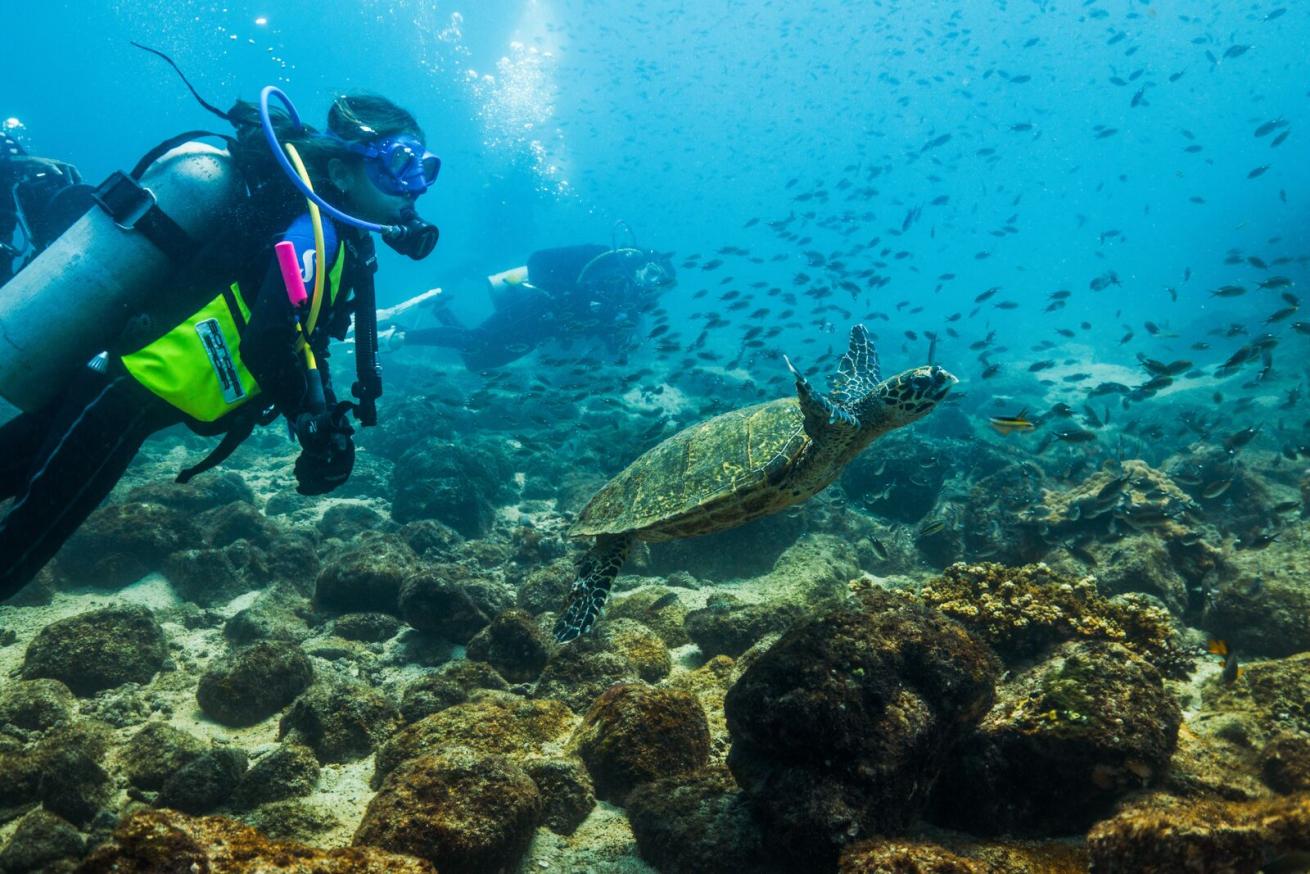
Courtesy Visit PanamáDiving at Punta Deseo, Coiba National Park, Gulf of Chiriqui, Panama.
Wherever you base yourself in western Panama’s Pacific side, you’re close to its best diving area, Coiba National Park within the Gulf of Chiriquí, famous for its diverse marine life. In fact, it’s a UNESCO World Heritage Site, which protects its large pelagic species—hammerhead sharks, whale sharks and manta rays, to name a few.
Diving at the Wahoo Rocks and Faro sites, I was astounded by the many white-tipped reef sharks we encountered, all lurking at the nearby dive site appropriately named Buffet. From my experience, Buffet was truly a smorgasbord for large predatory fish; it was home to massive schools of grunts, swimming tightly together in bait ball formations. While gathering in clusters is intended as a defense mechanism, for me, their mesmerizing coordinated ballet was absolutely hypnotic and even transcendental—unlike anything I’ve experienced underwater before.
Diving in Panama can be full of surprises, whether you’re in the coral-rich Caribbean Atlantic, or the Pacific waters of big fish encounters. With two oceans to choose from—even on the same day—it's a unique scuba destination that’s truly unlike anywhere else in the world.




